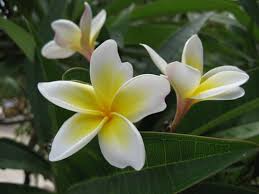**The Importance of Porcelain Flowers in the Ornamental Plant Industry**

Porcelain flowers play a pivotal role in the ornamental plant industry, contributing to its diversity, innovation, and artistic expression. As prized botanical specimens, they hold a special significance that extends beyond their aesthetic appeal, influencing trends, techniques, and market demand within the industry.
1. **Cultural Heritage Preservation**: Porcelain flowers are deeply rooted in the cultural heritage of many societies, where they are revered for their symbolic meanings and artistic craftsmanship. By preserving and showcasing these floral treasures, the ornamental plant industry helps to safeguard centuries-old traditions and techniques, ensuring their continuity for future generations.
2. **Artistic Innovation**: The cultivation and production of porcelain flowers require a high level of skill and expertise, making them a source of artistic innovation within the ornamental plant industry. Artisans and growers continually push the boundaries of creativity and craftsmanship, experimenting with new techniques, materials, and designs to create unique and captivating floral specimens.
3. **Market Demand and Trends**: Porcelain flowers cater to a niche market of discerning collectors, enthusiasts, and aficionados who appreciate their rarity, beauty, and cultural significance. As such, they often command premium prices in the market, driving demand for high-quality specimens and fueling trends in floral aesthetics and design.
4. **Cultural Exchange and Collaboration**: The cultivation and appreciation of porcelain flowers facilitate cultural exchange and collaboration among growers, artists, and enthusiasts from different backgrounds and regions. Through exhibitions, workshops, and collaborative projects, individuals come together to share knowledge, techniques, and insights, enriching the collective understanding and appreciation of porcelain flower artistry.
5. **Educational and Inspirational Value**: Porcelain flowers serve as valuable educational tools, offering insights into botanical anatomy, artistic techniques, and cultural symbolism. As living works of art, they inspire creativity and curiosity, encouraging enthusiasts to explore the intersection of nature, art, and culture within the context of the ornamental plant industry.
In summary, the importance of porcelain flowers in the ornamental plant industry extends far beyond their decorative value. As cultural artifacts, artistic creations, and botanical specimens, they contribute to the industry’s vitality, innovation, and cultural heritage preservation, enriching the lives of growers, collectors, and enthusiasts around the world.
**The Significance of Porcelain Flowers in the Ornamental Horticulture Industry**
Porcelain flowers hold a significant place within the ornamental horticulture industry, contributing to its vibrancy, innovation, and cultural heritage. Their importance extends beyond mere decoration, influencing various aspects of the industry’s practices, market trends, and artistic expressions.
1. **Artisanal Craftsmanship**: The cultivation and crafting of porcelain flowers require meticulous attention to detail and expert craftsmanship. Skilled artisans and growers employ traditional techniques and specialized knowledge to create exquisite floral replicas that capture the essence of natural blooms. This dedication to artisanal craftsmanship adds value to the ornamental horticulture industry, fostering appreciation for handcrafted botanical artistry.
2. **Cultural Symbolism and Tradition**: Porcelain flowers are imbued with rich cultural symbolism and tradition, reflecting the aesthetic preferences and spiritual beliefs of different societies. From the auspicious meanings of certain flowers in Chinese culture to the ceremonial significance of floral arrangements in Western traditions, porcelain flowers serve as cultural ambassadors that bridge diverse cultural practices and values within the ornamental horticulture industry.
3. **Market Demand and Economic Impact**: The popularity of porcelain flowers among collectors, enthusiasts, and decorators drives market demand within the ornamental horticulture industry. High-quality porcelain flower specimens command premium prices in the market, contributing to the economic viability of nurseries, artisanal workshops, and floral retailers. As such, porcelain flowers play a pivotal role in shaping market trends and consumer preferences within the industry.
4. **Educational and Inspirational Value**: Porcelain flowers serve as valuable educational resources and sources of inspiration for enthusiasts, students, and professionals within the ornamental horticulture field. Studying the anatomy, cultivation techniques, and artistic interpretations of porcelain flowers provides insights into botanical science, artistic expression, and cultural history, enriching the educational landscape of the industry.
5. **Cross-Cultural Exchange and Collaboration**: The cultivation and appreciation of porcelain flowers facilitate cross-cultural exchange and collaboration among artists, growers, and enthusiasts from different backgrounds. Through international exhibitions, collaborative projects, and cultural initiatives, individuals come together to share knowledge, techniques, and creative insights, fostering mutual understanding and appreciation for the diverse cultural heritage of porcelain flower artistry.
In conclusion, the significance of porcelain flowers in the ornamental horticulture industry transcends their decorative appeal, encompassing aspects of craftsmanship, cultural heritage, economic value, and educational enrichment. As enduring symbols of beauty, creativity, and cultural diversity, porcelain flowers continue to inspire and captivate individuals within the industry, shaping its trajectory and enriching its cultural landscape.

